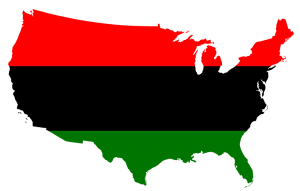(ThyBlackMan.com) One hundred and fifty years ago, the Civil War began. Americans suffered more loss of life than in World War I and World War II combined.
Slavery was ended, but racial inequity was not. In the South, denial that slavery was the root cause of the secession and war began immediately after the Confederacy’s surrender. And that denial of reality corrodes our politics to this day.
‘State’s rights’
In a brilliant essay in Time Magazine, “The Way We Weren’t,” David Von Drehle notes that a recent Harris Interactive poll asked Americans what the Civil War was about, and found that a majority of Americans – including a  staggering two-thirds of White respondents in the 11 states that formed the Confederacy – answered that the South was mostly motivated by “states’ rights,” rather than the future of slavery.
staggering two-thirds of White respondents in the 11 states that formed the Confederacy – answered that the South was mostly motivated by “states’ rights,” rather than the future of slavery.
The argument for states’ rights provided the rationale for ending the Reconstruction after the Civil War, breaking the promise to the freed slaves, and yoking the South back under racial apartheid. And when the civil rights movement finally ended legal segregation, states’ rights became the banner under which the South resisted school desegregation.
The modern Republican Party was built on a Southern strategy, using race as a wedge to divide middle and low-income voters. Denial is not simply a syndrome of the former Confederate states. Slavery was also widespread in the North, as was segregation. When the slaves and their children came North, they found themselves redlined out of good homes, good schools and good jobs.
Disproportionate pain
To this day, African-Americans are last hired and first fired. To this day, African-American children attend racially segregated public schools, often suffering from savage inequality in funding and in skilled teachers. To this day, African-Americans must struggle with a system of criminal injustice that makes them more likely than Whites to be stopped, more likely to be searched if stopped, more likely to be arrested, more likely to be imprisoned for the same crimes.
The problem of the 20th century, wrote W.E.B. Du Bois, “is the problem of the color line.” As America moves toward being a majority minority country, the problem of the color line remains in the 21st century. Yes, great progress has been made, as Barack Obama’s presidency attests, but race still colors our debates and skews our priorities.
When Wall Street excess and regulatory lassitude blew up the global economy, conservatives sought to defend what Alan Greenspan admitted was a “flaw” in their worldview by laying the blame on Blacks. They argued with a straight face that the powerful poverty lobby forced hapless banks to make loans to unqualified urban borrowers, thereby inflating the housing bubble and causing the mess.
Never mind that most of the subprime loans were issued and marketed by financial houses that weren’t covered by the Community Reinvestment Act. Never mind that the banks were so rapacious that they invented synthetic (fake) packages of mortgages for speculation.
Unequal country
America is a more unequal country, with more children in poverty and more citizens without health care than any other industrial country. There is little doubt that were Americans of one race rather than a melting pot, had we not been stained by racial slavery and segregation, we would do far more to ensure every child a healthy and fair start in life.
Today, the condition of African-Americans is worsening. De facto segregation is expanding. The cuts in public education, public transportation, public health care and jobs training disproportionately hit African-Americans. The question isn’t deficits, but priorities. Republicans at the state and national level want to lower taxes on the richest Americans, while cutting services to the most vulnerable.
When Dr. King spoke in Washington in 1963, he spoke of the need for America to honor its promise of equality. We issue this same demand to our Congress and the administration today – truthful analysis of today’s disparities and inequalities is needed, and a plan for remedy, investment and reconstruction.
It will take this type of bold action to ensure that the color line does not remain the problem in the 21st century.
Written By Rev. Jesse Jackson
Official website; http://rainbowpush.org

















Uh, sorry Rev Jackson, but the claims that the war was not over slavery began on July 25th, 1861 by the United States Congress
“Resolved by the Congress of the United States, That the present deplorable civil war has been forced upon the country by the disunionists of the Southern States now in revolt against the constitutional Government and in arms around the capital; that in this national emergency Congress, banishing all feelings of mere passion or resentment, will recollect only its duty to the whole country; that this war is not waged upon our part in any spirit of oppression, nor for any purpose of conquest or subjugation, nor purpose of overthrowing or interfering with the rights or established institutions of those States, but to defend and maintain the supremacy of the Constitution and to preserve the Union, with all the dignity, equality, and rights of the several States unimpaired; and that as soon as these objects are accomplished the war ought to cease. ”
It was repeated numerous times by President Lincoln “If I could save the Union without freeing a single slave I would do so” and “So long as I am alive this war is only about bringing the country together and not about freeing the slaves”
The famous school desgregation thing was not from the ‘south’ but from TOPEKA KANSAS!
Dear Rev Jackson, you are many things, but knowledgeable about history you aren’t. You seem to want to lead a certain segment of the population astray from actual truth – almost as if to keep them down and blind for some evil purpose or agenda. Perhaps you might lose some ‘followers’ if the real truth were known? OK I understand now…..